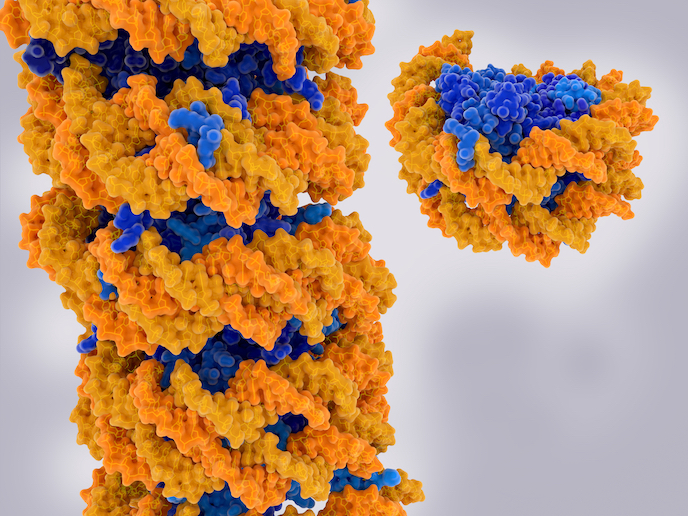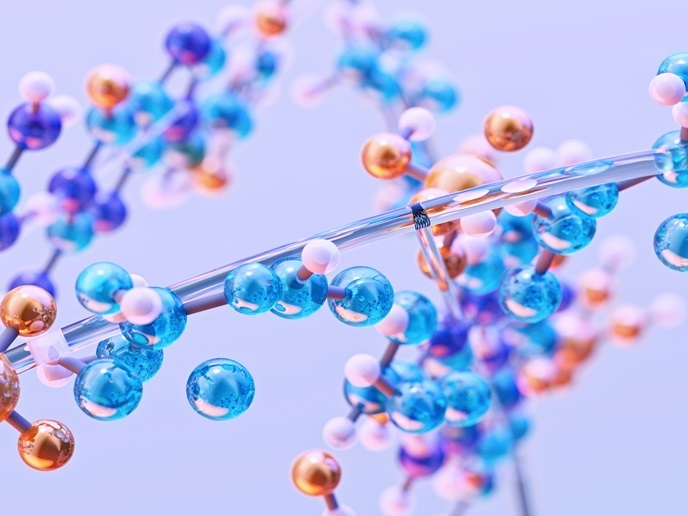Artificial cellular signalling models
Traditionally, biochemical and molecular biology methods have been used to study cellular signalling pathways with the focus on individual pathway components only. However, the advent of omics technologies such as genomics and proteomics alongside systems biology has facilitated a more holistic view on signalling. To understand the molecular machines implicated in signalling cascades, a detailed view of their architecture and interactions is required. Often, the low endogenous abundance or tissue heterogeneity of certain proteins impedes their extraction, purification and structure elucidation. Scientists often need to resort to recombinant production and purification in heterologous host cell systems. However, this frequently risks compromised, non-physiological behaviour of the specimens studied. Most medicines marketed by the pharmaceutical industry target signalling cascades to treat diseases. The EU-funded SynSignal(opens in new window) consortium took the view that novel tools based on synthetic biology approaches to study signalling new systems could help overcome certain product development challenges. A synthetic approach to signalling “Synthetic cellular signalling circuits are perceived as being analogous to electronic circuits,″ explains project coordinator Dr Imre Berger. “This renders the system accessible for engineering.″ SynSignal partners designed and engineered individual signalling building blocks and assembled them in vitro to produce synthetic cascades that closely resemble the natural processes. “Each component of the circuit, encoded by a DNA sequence of defined structure and function, is physically interchangeable with compatible modular building blocks,″ he continues. The tools for DNA assembly and protein production exhibited broad combinatorial potential and could be applied to different types of signalling. Project members focused on signalling initiated after activation of G-protein-coupled receptors, a large and ‘hot’ family of membrane proteins that are implicated in many physiological processes including taste and smell. Importantly, these synthetic pathways served as screening platforms for new medicines to treat diseases such as cancer and diabetes. Novel miniaturised bioanalytical methods were also established using mass spectrometry and cryo-electron microscopy. Mechanistic models and software packages further aided the analysis of signalling pathways and the design of corresponding synthetic signalling circuits that mimicked natural functions. Readout strategies provided unique benefits for molecule discovery and now pave the way to new flavour, fragrance and nutritional ingredients. Application of the synthetic signalling toolbox Overall, the SynSignal project generated innovative synthetic biology platforms and materials to change the way we discover and produce novel products and medicines. “SynSignal platforms will boost the efficiency at which essential signalling pathways that dictate cellular processes can be modified, modulated and interfered with,″ outlines Dr Berger. Cost of product development, and time required for new products to reach the market will also be reduced. Importantly, this will open entirely new avenues for the development of novel classes of potent and efficient therapeutics and facilitate advances in industrial biotechnology and other multibillion markets. The open innovation policy pursued in SynSignal enables access of European pharmaceutical and industrial biotechnology companies to the SynSignal drug discovery technologies. This will not only accelerate discovery in the life sciences but also provide competitive advantages on a global scale. With signalling systems gaining traction outside of the pharmaceutical industry in for example, flavour and nutritional industries, the generated tools extend their application beyond biomedical processes. Looking to the future, Dr Berger anticipates “a huge potential for synthetic biology to transform a large number of key areas of important socioeconomic challenges, including green technology, drug discovery and manufacturing.″







